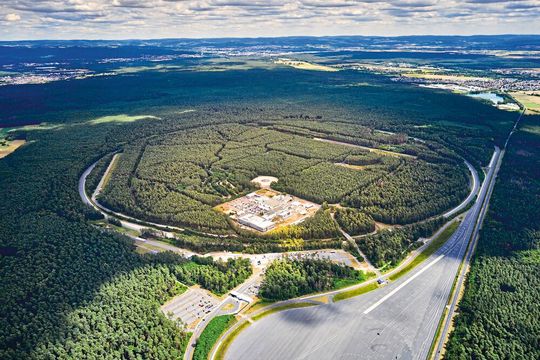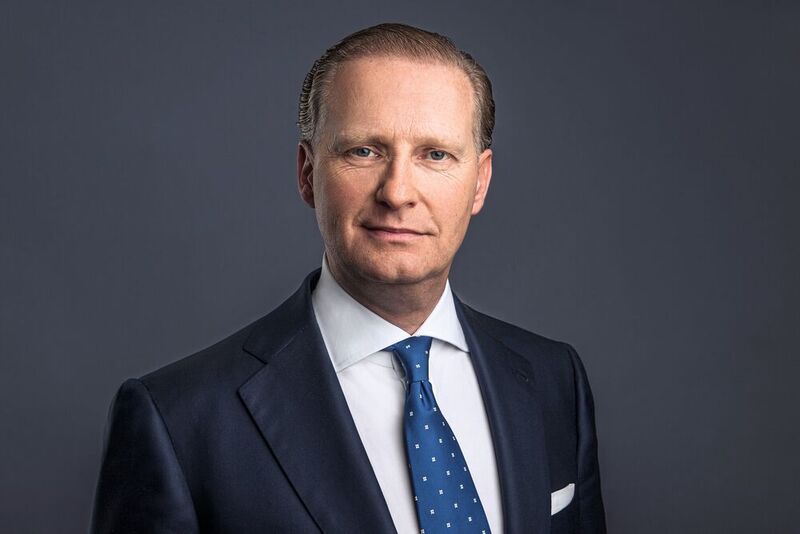Segula Technologies
Think innovatively like the software industry
07.06.2022
Sponsored by
The transformation of the automotive industry demands a high level of adaptability from engineering service providers. How Segula Technologies is adapting to the new circumstances is explained by Dr. Holger Jené, Managing Director of Segula Technologies in Germany.
(Image: Balsereit / Segula)
Mr Jené, how well has Segula Technologies got through the two years of Corona?
At the beginning of 2020, the corona pandemic also slowed us down. But by the end of 2020 we noticed that customers were increasingly asking for our services. That is why the 2021 financial year went much better. This increased customer interest has continued to date, even if the Ukraine war and the corona-related lockdowns in China are again causing uncertainties.
Does the Russian invasion of Ukraine directly affect Segula Technologies?
Since we do not have a location in Ukraine and are not a manufacturing company, the fluctuating output volume of the OEMs has no direct impact on our business. Rather, I reckon with indirect consequences in the case of longer acts of war. These may result in possible savings programs by customers and could put planned development projects for vehicles and components on hold.
On the other hand, changed risk assessments for Eastern Europe or East Asia could result in production being relocated from there or back. Since Segula Technologies is also strong in the areas of manufacturing engineering, tooling and supplier integration, we can support OEMs and suppliers in such relocations.
How have the most important key figures developed in 2021?
In 2021 we increased our sales compared to the previous year. However, growth in sales does not mean that earnings will increase. In particular, the wage level adopted from OEM times cannot always be reconciled with the cost structure of an engineering service provider (Segula took over parts of the Opel development center in Rüsselsheim in 2019. Editor’s note).
It is particularly pleasing that a quarter of this turnover was generated with new customers, the majority of them with German OEMs. In 2020, only about four percent of revenue was from customers outside of Stellantis. In the first quarter of 2022, we are already recording a third of our sales with new customers. Perhaps by the end of the year we will achieve a balanced order situation between Stellantis and new customers.
How has 2021 affected employment?
At the end of March 2022, we employed almost 1,000 people in Germany. Unfortunately, last year we had to lay off some employees in areas where there were no future prospects due to a lack of new orders.
We are currently working on a detailed restructuring program that will define growth and future areas for Segula Technologies in Germany to invest in. The goal is a sustainable and healthy company, and for this we need a future-oriented structure, a competitive cost structure and, of course, qualified employees.
Where do you still see a need for optimization in terms of competitiveness?
Our way of thinking is still strongly influenced by that of an OEM, which has advantages and disadvantages for an engineering service provider. On the one hand, our OEM genes are a competitive advantage, since we are aware of the responsibilities in a series project and know the sticking points in the processes very well. Our customers appreciate that we think like an OEM and speak to them as equals. On the other hand, we have to internalize the self-image of a service provider even better and approach customers even more proactively. We also have to adopt new thinking and new skills for new ecosystems such as Smart City, autonomous driving and connectivity. However, the entire global automotive industry must face up to this challenge.
What arguments are you currently using to convince new customers?

(Image: Segula)
We have a few Chinese customers who choose our conveniently located and well-equipped Rodgau-Dudenhofen test center to prepare their vehicles for European type approval or homologation. If there is also a need for development, as a full-service provider, we can take on upcoming tasks at the same time. Our goal is to get in touch with these partners earlier in the development process. To this end, we are taking action on site together with our colleagues in China.
…and with the suppliers?
We still see untapped potential for orders from suppliers, which is why we have set up a new key account structure for the large international Tier 1 suppliers.
How do you address the important German OEM customers?
With the German OEMs, we benefit from our own past. When the developers on the customer side perceive our OEM focus from development to series support in the preliminary talks, trust is created. That may be an important reason why we have won several major projects from German OEMs in recent months – for example for the validation of software for combustion engines, where we have a high level of competence, as our engineers used to write the engine control software at GM/Opel themselves.
And how is the non-automotive business in Germany?
We are currently focusing clearly on automotive. We will use certain synergy effects for the rail, aerospace and energy technology markets. For example, we work closely with an elevator manufacturer and oversee non-automotive projects with fuel cells and hydrogen. Let me put it this way: Automotive is a must, everything else is currently optional.‹
How did the individual engineering areas perform last year?
Our services for the further development of internal combustion engines are in great demand, as the Euro 7 emission standards are pending. For this purpose, we have upgraded some test benches in advance in order to be able to reliably demonstrate the very low emission values of Euro 7 and with the smallest measurement tolerances. We are one of the first service providers in the certification process for this solution and are already working on development projects.
At the same time, we have converted other test cells in which we develop and test e-drives, as well as the validation of batteries and software. In the foreseeable future we will then have about the same number of development and validation facilities for combustion engine and battery-electric drives.
What potential do you see for the fuel cell?
The market success of the fuel cell drive and the energy carrier hydrogen is currently somewhat difficult to estimate. I see some niche markets. We have made strategic investments in our test benches for fuel cells and other infrastructure. The decisive factor will be whether Europe and Germany in particular agree on a stringent hydrogen policy from environmentally friendly green electricity generation to market-oriented support programs
be able.
Aside from drive technology, where do you focus?
Definitely in automated and autonomous driving! We are creating new infrastructure for this in our test center in Rodgau-Dudenhofen. In cooperation with the networking specialist Cellnex Telekom, we are equipping the site with a private 5G network so that we and our customers can benefit from secure and delay-free vehicle-to-X communication in the future.
We also want to set up various test tracks and urban streets where the automated and autonomous driving functions can be tested realistically in realistic everyday traffic situations. Last but not least, we are creating additional workshop, laboratory and office space in which our customers can immediately evaluate the test results, shielded from the public, and implement them in further development steps.
That’s a lot of hardware. What about the software?
In recent years I have learned that software development, digitization and networking are completely different worlds than classic vehicle and drive development. People think completely differently there, work and collaborate with other methods. If Segula Technologies wants to be successful, we have to think as innovatively as software-driven industries.
For this reason we founded the Software & Digitization division. All of our software-related activities are bundled there, supplemented and the aforementioned networking mapped out at all levels. Last but not least, agile new processes should be implemented in this division and spread to other areas of our company.
This transformation into a software-driven service provider and networking specialist is perceived positively by our customers. An OEM has recently asked us about a strategic partnership and we have won a large development order for automated and autonomous driving functions from another OEM.
Which business areas does Segula Technologies still want to open up? Which ones could be abandoned?
From our point of view, electromagnetic compatibility, or EMC for short, in hardware and software is a basic requirement for automated and autonomous driving. At the beginning of the year, we put a new antenna laboratory into operation, in which we map the entire range of modern antenna tests for vehicles. This laboratory ensures the effectiveness and correct design of the wireless communication world, which includes mobile communications, W-LAN, radar, Bluetooth and many other technologies.
We have to take a close look at business areas with intense competition where we cannot operate sustainably with our German cost structures, especially when high investments are pending.
Do you still see potential for orders for engineering service providers beyond Euro 7?
In my view, combustion engines with petrol and diesel fuels will still be rolling off the production line in ten years, especially in countries with less developed infrastructure. In addition, there may be e-fuels that, despite calculated CO2-neutrality continue to emit pollutants. Therefore, even after the introduction of the Euro 7 emission standard, there will still be a lot of calibration work on the combustion engine, which many OEMs will probably be happy to outsource to a competent service provider.
How will companies assess certain location and risk factors in light of the pandemic and war?
In the future, companies will be careful to better dose their activities in countries and regions with high risk factors. The focus of our new software and digitization division will therefore be in Rüsselsheim, with satellites in the Baltic States, for example. In addition, India is moving more into our focus.
What sales development do you expect for Segula and the individual business areas in the next few years?
I don’t want to name specific sales targets. But currently the distribution of sales between the “Vehicle” and “Drive” divisions is roughly balanced. In five years, these two divisions as well as “Software and Digitization” should each contribute a third to the total sales of Segula Technologies in Germany. After that, software and digitization will clearly be the strongest business area. However, we want to grow in all areas.
(ID:48290042)
–

/cloudfront-us-east-1.images.arcpublishing.com/dmn/G2RVF2T4IFDVFBJC62HE7IPH5Q.jpg)
